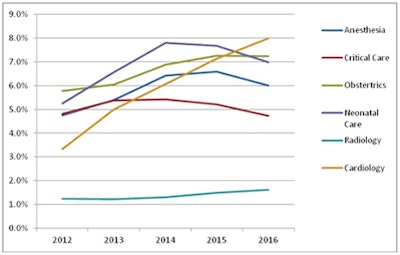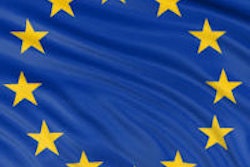
Since 2008 the global economic crisis has deepened and many healthcare markets have faced the real prospect of decline. Indeed many did, as cuts in funding and reimbursement adversely affected hospital purchasing of medical equipment. Given the ever-present uncertainty of economic recovery, many hospitals are approaching purchasing decisions with great caution -- an effect that is materializing in the continued decline and slow growth in medical equipment markets.
Healthcare IT, however, finds itself in a unique position: it can help reduce the overall costs that hospitals face by cutting waste, improving workflow, increasing speed of diagnosis, and minimizing errors. What has been the impact of the financial crisis on the European healthcare IT market? What is the outlook for this market in the face of continued economic woes? These are the key questions for the sector.
This article assesses the economic impact and outlook in Western Europe for healthcare IT products in six main hospital departments: radiology, cardiology, anesthesia, critical care (intensive care unit [ICU]), neonatal care, and obstetrics.
 Revenue growth in the Western European market for healthcare IT. Excludes U.K. Connecting for Health program. Source: InMedica.
Revenue growth in the Western European market for healthcare IT. Excludes U.K. Connecting for Health program. Source: InMedica.The above figure shows the growth outlook for healthcare IT in Western Europe by department. Large reductions in public healthcare spending in Italy, Spain, and Portugal led to the decline of the radiology IT market in these regions from 2010 to 2011, as contract renewals and replacements were put on hold. Further declines are projected in 2012, as austerity measures are implemented. Nevertheless, these countries saw positive growth in the market for healthcare IT products in other departments such as anesthesia and critical care, as new installations of IT systems were implemented. The majority of Western European countries experienced positive growth in healthcare IT spending from 2010 and encouragingly, no country experienced declines across all departments.
Major trends by department include:
Radiology: Radiology continues to contribute most revenues in the market for healthcare IT in clinical departments. As the radiology PACS and radiology information systems (RIS) markets mature in Western Europe, advances in managed services, including software-as-a-service and other cloud-based models, are helping reduce total costs of ownership and improve data sharing between different departments and sites.
Cardiology: The need for reporting clinical outcomes and ensuring better interconnectivity between different cardiology modules -- including ECG management, cath lab, and hemodynamics -- is becoming even more important in cardiology, driving stronger growth in cardiology IT.
Anesthesia: The anesthesia information systems (AIS) market is still very immature; in the U.K., for example, it is estimated that more than 85% of anesthesia departments still use paper documentation. However, the benefits of documenting care provided throughout the surgical process are now being recognized. AIS can help to improve patient care, increase efficiency, and reduce operating room waiting lists, thereby reducing hospital costs.
Critical Care: Outside of radiology, the critical care information systems (CCIS) market in Europe has experienced the highest levels of penetration. The ICU department is one of the most influential departments in a hospital because it looks after the sickest patients, and it is often seen as the department where most benefits can be gained by implementing IT systems. Interoperability in the ICU is also becoming increasingly important. There is increased demand for medical devices, such as ventilators and patient monitors, to automatically integrate with the CCIS.
Neonatal: Neonatal information systems (NIS) are relatively new in many Western European hospitals. Neonatal departments often operate independently of other hospital departments and are not fully convinced of the need for NIS. However, as further advances in neonatal medicine are achieved and clinicians are able to support even more fragile newborns, the need to efficiently document care and accurately calculate dosages becomes even more important.
Obstetrics: The saturation of the obstetrical information systems (OIS) market in Western Europe is significantly lower than that in North America. In North America, the extremely high incidence of malpractice claims in obstetrics has driven the need to keep accurate patient records. However, in Western Europe such a compelling reason has not been established, and many departments still prefer to use paper-based systems. Strong growth of the OIS market is anticipated as Western European hospitals begin to realize the value of OIS in improving patient care and avoiding adverse incidents during childbirth.
Overall, healthcare IT continues to show positive growth in Western Europe as the cost-saving benefits of more efficient departments, the need to enhance diagnosis, and improve access to patient data lead to better clinical outcomes.
Theo Ahadome and Carly Reed are market analysts at InMedica (www.in-medica.com), a division of IMS Research (recently acquired by IHS (NYSE: IHS). InMedica provides research and analysis on key medical markets, including Medical Imaging, Healthcare IT, Clinical Care, Consumer Medical Devices and Digital Health.
The comments and observations expressed herein do not necessarily reflect the opinions of AuntMinnieEurope.com, nor should they be construed as an endorsement or admonishment of any particular vendor, analyst, industry consultant, or consulting group.


















